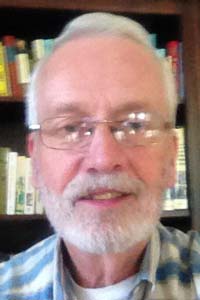Opinion
This week’s news throughout the state will doubtless be dominated by discussions regarding the Confederate Battle Flag on the grounds of the State House, as well it should. By the time you read this issue of The Edgefield Advertiser, the issue may very well have been settled, and change will be in the air, quite literally. The issue of monuments and memorials will not be settled as quickly, not this week and likely not for a long while to come.
I know that many of our politicians, including our own Sen. Shane Massey, have publicly stated starkly different Ideas about flags and about monuments, ideas based on the profound symbolism of each. Flags are almost living things, ephemeral ideas become corporeal as they are seen lit by sunlight or spotlight, waving in the breeze. In contrast, monuments and memorials are more like small outdoor static museums. Tearing down monuments because they memorialize events that have become unpopular is almost always a bad idea, due to the finality of destruction. Think about what the Taliban did in 2001 to the cliff side Buddhist monuments in the Bamiyan valley of Afghanistan, or what the group calling itself ISIS is doing this year to the Roman ruins in Palmyra in the Syrian desert, to see the irreparable harm that a disregard for history can do.
On the other hand, think about Baghdad not too long ago, when U.S. Marines helped to oust their dictator, Saddam Hussein. There, the local populace who had been the subject of Saddam’s tyranny took it on themselves to topple memorials to him. That wasn’t about destroying or denying history; that was about celebrating liberation from a history of oppression, and destroying memorials “honoring” a dishonorable regime based on brutality and terror against themselves and against their families.
Monuments containing political statements or religious viewpoints held by others deserve respect, if only for the sincere views of those who erected them. Monuments stating the truth, however unpalatable it may seem to later generations, also deserve more than just a cursory decision if the political winds change. Monuments on the other hand which tell only half-truths, or that state as fact events that in actuality did not happen as depicted, like monuments which “honor” dishonorable events or people, require a deeper consideration. A true consensus among many people of differing backgrounds is needed before taking any irreversible or destructive actions. And we do have some of those monuments to lies or to half-truths, here in South Carolina.
Change is always difficult. Books as disparate as Thomas Paine’s Common Sense (1776) and Spencer Johnson’s Who Moved My Cheese? (1998) deal with change, and what to do if something needs to change. This year, indeed this month, is going to be highlighted in the next generation’s history books as a time of change, and many more books are certain to be written about how well or how poorly we Americans, and in particular we South Carolinians, dealt with the current change.
Me, I’m optimistic that the history books will describe this time as one from which we emerged stronger as a society than ever before. The unexpected and uplifting events in Charleston that followed the wanton murders of nine innocent people illustrated just how strong, vibrant, and ultimately moral our society is. Change is not always about destruction; it can also be about growth and maturity, strength and reaching our promise. How about you, are you optimistic too?
—

